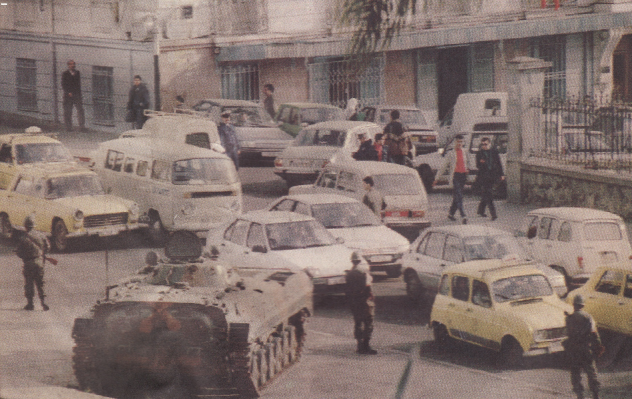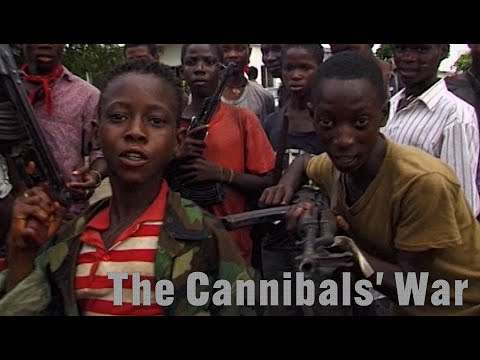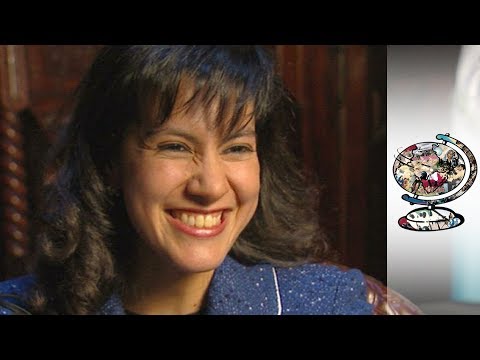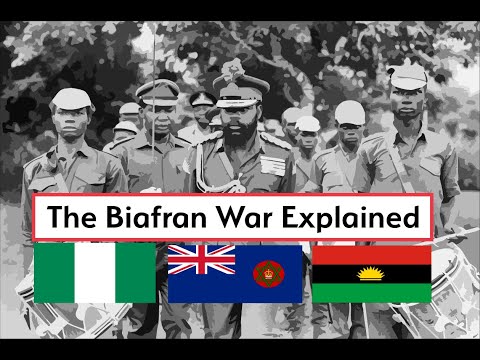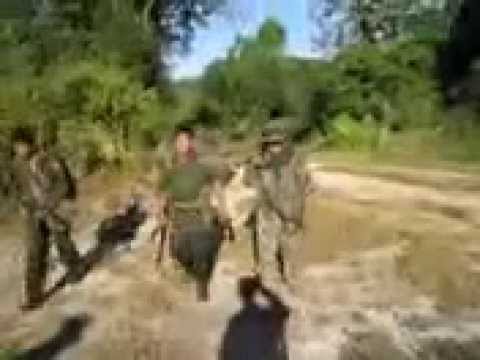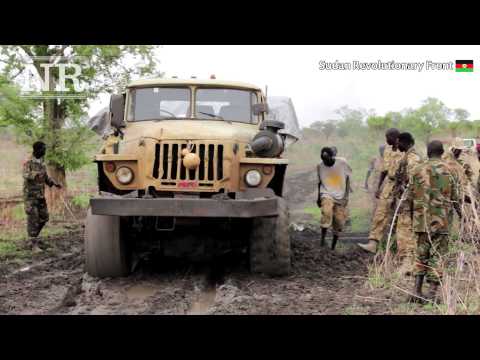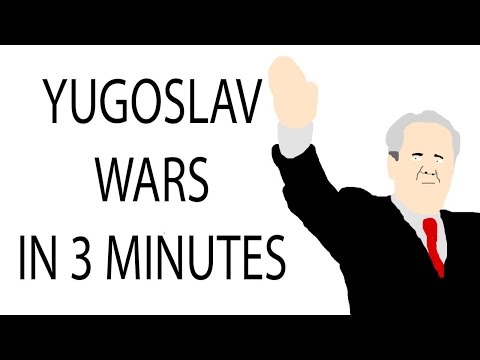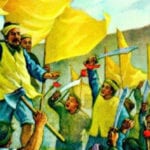Yet, as horrible as it is, Syria is not unique. Since humans first devised nation states, we’ve engaged in civil wars marked by their utter brutality. When it comes to post–World War II history, few civil conflicts have come close to the inhumanity of the following.
10 The Algerian Civil War1991–2002
At rush hour on July 25, 1995, a bomb exploded on the Paris subway, killing eight people and injuring 150. Prior to the Charlie Hebdo and ISIS attacks, it was one of the worst terrorist incidents that the French capital had seen. But the perpetrators weren’t dissatisfied French or European nationals; they were Algerian agents. The bombing was simply the spillover from one of North Africa’s deadliest civil wars. Like the current conflict in Syria, the war started when a government refused to step down. In this case, the military canceled an election when it began to look like an Islamist party would win. The preemptive coup sent protestors out onto the streets, and the situation soon morphed into a deadly battle between government forces and out-of-control jihadists. In a chilling echo of ISIS in Syria, the Islamists first targeted Algerian civilians, and then French civilians, living in Paris using improvised bombs. At the hands of the fanatics, teachers, artists, journalists, and judges were disappeared. Even now, nearly 15 years later, 8,000 innocent people are still missing. On the other side of the coin, Algeria’s army was equally bad. Just as Assad drops barrel bombs on his own people, the Algerian authorities burned down entire villages looking for terrorists (who had frequently fled weeks beforehand). At the height of the “black decade,” both sides were committing war crimes, including the murder of newborn babies. By the time the dust settled in 2002, 200,000 civilians were dead. For comparison, the infamous Sri Lankan civil war against the Tamil Tigers killed about half that many in more than double the time.
9 Liberia’s Double Civil War1989–1996, 1999–2003
Throughout the 1980s, Liberia was a boiling pot of simmering ethnic resentment. The indigenous president Samuel Doe had finally overthrown the political stranglehold that the Americo-Liberians, a group descended from freed American slaves, had held since the country’s formation. Unfortunately, he then proceeded to promote his own ethnic group over all others. It was into this volatile situation that Charles Taylor stepped in 1989. A former preacher, Taylor had fled to Libya after being indicted by Doe’s government for embezzlement. He trained a guerilla army, came back, and overthrew his old enemy. Most of Liberia welcomed him with open arms . . . until a group allied with Taylor executed Doe in 1990. At that point, Taylor turned on his allies, sparking a war that engulfed the entire country. Over the next decade or so, Taylor would end one civil war, start another, and make a civil war in neighboring Sierra Leone much worse. He even managed to become president of Liberia, running under the slogan, “He killed my Ma, he killed my Pa, but I will vote for him.” During the two wars, over 250,000 Liberians died—around 7.5 percent of the entire population. In addition, 25,000 people were raped. What made Taylor’s wars stand out wasn’t how brutal they were, but how disturbingly surreal. Taylor liked to rule through fear, using units like his Butt Naked Battalion to freak people out. Despite the weird name, the Battalion was far from amusing. Children were fed amphetamines, shot full of hallucinogens, given guns, and told to kill anyone who crossed their path. They went into battle either naked or wearing lurid women’s wigs and ball gowns.
8 Sierra Leone Civil War1991–2002
Sierra Leone shares a long border with Liberia—a hot, swampy stretch of wetland that unfurls for nearly 300 kilometers (200 mi). Politically, the two countries are also intertwined. This was especially the case in the 1990s. Thanks to Charles Taylor’s intervention, an insurgency that could have been quashed erupted into a merciless decade-long war. The spark that lit the fuse was the frighteningly incompetent reign of President Joseph Momoh, a guy so corrupt he’d make Putin look like Lincoln. When his regime stopped paying even the army, ex-Corporal Foday Sankoh whipped up a rebellion and seized towns along the Liberian border. Backed by Charles Taylor, they were initially considered heroes. That didn’t last. Before a year had passed, Sankoh’s Revolutionary United Front (RUF) was accused of raping and mutilating civilians. Unfortunately for ordinary people, the army was just as bad. With its low rations and lack of pay, the army found it impossible to keep soldiers in line. Like Iraqi troops defecting to ISIS, many of Sierra Leone’s soldiers became “sobels”—soldiers by day, rebels by night. In effect, the two sides in the conflict wound up blurring into a single force that did nothing but terrorize civilians. Sobels were later found to have tortured civilians in hideous ways during the conflict. Some forced their victims into committing cannibalism. Thanks to Taylor’s funding of the rebels and the proxy resource wars being fought over the country’s diamonds, the war reached a point where it had no end in sight. It wasn’t until the UN sent in 17,000 troops backed by the British army that the endless terror finally stopped. By then, 50,000 people were dead. Even today, girls who were sold into sex slavery during the conflict are still waiting for assistance or justice.
7 The Guatemalan Civil War1960–1996
During the Cold War, the CIA developed a habit of sticking their noses into Latin America, often with disturbing results. For example, they helped Chilean monster Augusto Pinochet into power, and the CIA and Henry Kissinger encouraged Argentina’s military junta to “disappear” 30,000 opponents. But perhaps nothing can compare to the CIA’s involvement in Guatemala. In 1954, democratically elected president Jacobo Arbenz legalized the country’s Communist Party, sparking a panic at the CIA. The agency responded by having Arbenz removed in a coup and replaced by Colonel Carlos Castillo Armas. Colonel Armas was then quickly murdered and replaced by General Miguel Ydigoras Fuentes. Unfortunately, Fuentes was an absolute psychopath. When indigenous left-wing groups rose up against him, Fuentes unleashed a campaign of terror that few nations have ever experienced. Civilian suspects were murdered in the night, and their mutilated bodies were dumped on public roads. He also initiated a culture of murder and abuse in the army, which lasted long after he was ousted. When a 1999 UN report reviewed the entire 36-year war, they concluded that 93 percent of human rights violations were carried out by the Guatemalan state. In the end, Guatemala’s extremely one-sided war killed 200,000 people, mostly civilians. So many of the dead were from the country’s Maya minority (83 percent of all those killed, by the UN’s count) that some have since labeled the conflict a genocide.
6 The Colombian Conflict1964–Present
The most depressing fact about Colombia’s ongoing conflict, often called the longest current civil war in the world, is that it isn’t even the first war that Colombians faced in the 20th century. In the 1940s, a riot in Bogota led to conservative and liberal factions across the country forming death squads and murdering one another. Known as La Violencia, this silent war was marked by extreme brutality. Liberals decapitated Conservatives and played soccer with their heads. Conservatives slashed Liberals’ throats and pulled their tongues out from the wound, a mutilation known as a “Colombian necktie.” In total, 200,000 Colombians died in atrocious ways. La Violencia also sowed the seeds for the present conflict. Fast forward to the 1960s, and an awkward truce had banned all parties from Colombian politics except for the Liberals and Conservatives. The Communist party in particular took this hard and told peasants to start their own armies. One such army, in the town of Marquetalia, was bombed into oblivion without warning by the Colombian army. Only 48 men survived. Those 48 would go on to become the founding members of left-wing rebel outfit FARC. No sooner had FARC emerged than other rebel groups started to spring up. A Catholic rebel group called ELN emerged only a few months later. Despite this, the war remained a low-key affair until the 1980s. At that point, the cocaine trade got mixed in, and things got very messy. FARC and ELN used drug production to make millions. This allowed them to recruit more members, and they eventually became so powerful that they seized control of one third of the country. At the same time, guys like Pablo Escobar launched their own deadly criminal enterprises, which often came into conflict with the rebels. Other left-wing groups like M19 emerged, only to find right-wing paramilitaries out to kill them. The Colombian army started committing war crimes, and civilians were caught in the middle. By the 1990s, the number of factions, alliances, and gangs in the war was, as in Syria today, essentially uncountable. To date, the Colombian conflict has killed over 250,000 people and made seven million into refugees, more than any other war on the planet except for Syria. Luckily, the end may be in sight. FARC and ELN are currently in peace talks with the government. One of the longest civil wars in history might finally draw to a close.
5 The Salvadoran Civil War1980–1992
One of the most remarked upon aspects of the Syrian civil war is that it’s not really a civil war, at least in the usual sense. It’s an extremely complicated proxy war, one that’s pitting Saudi Arabia against Iran and Hezbollah, Russia against Turkey and the West, and Islamic extremism against secular governance. It also includes the Kurdish battle for a home state. In the 1980s, another country was having a similarly complex civil war. While it lacked the religious element of Syria’s, El Salvador’s civil war involved a comparably huge number of outside players, all pushing their own agendas. The source of the war was a conflict between Marxist rebel group FMLN and the right-wing government over a 1979 coup that saw the government shooting down protestors. It quickly metamorphosed into a larger ideological battle over land, freedom of expression, and the plight of the poor. However, it was behind the scenes that things really got complex. Despite being only the size of Wales or New Jersey, El Salvador soon became a proxy for regional and global battles. Because the conflict broke out during the Cold War, the FMLN was officially backed by the Soviet Union. However, the Russians were generally hands-off in their approach. The real supporters were Cuba and Nicaragua, who were pushing for a socialist revolution similar to their own. Against them was the United States, which was terrified of Central America going “red.” Add to that Costa Rica, Mexico, and even France sticking their noses in for different ends, and you had a recipe for disaster. A disaster is exactly what it was. Some 75,000 Salvadorans were killed over the decade as government death squads looted and raped entire towns, and the FMLN committed devastating acts of terrorism. It wasn’t until 1992, after the collapse of the Soviet Union ended Russian and US interest, that the war finally drew to a close. Even today, all the murky details of this shameful proxy war are not publicly known.
4 The Nigerian Civil War1967–1970
When Nigeria first won independence from Britain, it was less a viable state than a disaster in the making. The North was a series of Muslim feudal states, the South and East were Christian, and a once powerful animist kingdom survived in patchwork form. In addition, there were four major ethnic groups—the Hausa, Fulani, Yoruba, and Ibo—some of whom distrusted one another intensely. As a final headache, the country’s oil resources were concentrated in one part of the East. Getting along was never going to be an option. Things finally came to a head when Muslim Hausas went on the rampage, massacring 30,000 Christian Ibos. Up to one million Ibos fled to the east, where Lieutenant Colonel Odumegwu Ojukwu declared independence, setting up the Republic of Biafra. The oil went with him. The Nigerian military had other ideas. What followed was a humanitarian disaster even worse than Syria. When Biafra’s oil fields were recaptured, the fledgling state lost its entire income. Unable to import food, the Ibo people of Biafra were ravaged by an apocalyptic famine. In two short years, one million people had died from malnutrition, roughly four times more than have died in Syria since 2011. Many of the victims were children too young to understand why they were hungry. Eventually, Biafra was reabsorbed into Nigeria in 1970. But Nigeria’s troubled history didn’t end there. Over the next few decades, a succession of coups and countercoups would paralyze the country, finally culminating in the Boko Haram insurgency, which is still ongoing.
3 Myanmar’s Internal Conflicts1948–Present
It would be impossible to do justice to all of Myanmar’s internal conflicts in a single article. When the British exited what was then Burma in 1948, they left behind a patchwork of ethnic and religious groups with little in common. No sooner had the national government formed than fighting broke out. It has carried on more or less without interruption to this very day. Unlike in most civil wars, there has been no single group that the government has been fighting continuously. In the beginning, the major rebels were communists. However, they were soon replaced with an ethnic Christian insurgency, who were in turn eclipsed by a general uprising among all the country’s diverse factions. Parts of Myanmar split into de facto autonomous states organized along ethnic lines and have stayed that way ever since. Because the military junta refused to recognize them, fighting along their borders has been essentially constant. Elsewhere, other oppressed groups without a microstate of their own have resorted to guerilla warfare, using terrorism to attack the government. As an added complication, the Rohingya ethnic group has also been targeted in an extermination campaign that the United States Holocaust Memorial Museum terms “genocide.” The result is one of the bleakest, hardest to understand conflicts on the planet. Rohingya Muslims have been forced into slavery by their Buddhist oppressors, while until recently, ordinary people were at the mercy of a government that allowed its security forces to rape and murder them with impunity. All the while, different ethnic statelets have forged alliances and fought one another in an unending war. With around 15 rebel groups currently active, it’s hard to see Myanmar reaching a lasting peace any time soon.
2 Sudan’s Endless Civil Wars1955–1972, 1983–2005, 2003–Present, 2013–Present
It’s saying something when a conflict that has left half a million people dead is the least nasty civil war that a country has been involved in. The first Sudanese civil war erupted before the British had even formally declared the country independent, which they did on January 1, 1956. At the time, Sudan was one third of the size of the continental US and contained over 600 ethnic groups speaking 400 languages. There was also a religious aspect. The Arab-dominated Muslim North held the power, while the black, mainly Christian South considered itself exploited. In addition, the West was rife with ethnic tensions between black African farmers and nomadic Arab tribes. When a halfhearted attempt to create a federal system failed, there was really only one possible outcome. The initial war between the North and South erupted in 1955 and lasted a bruising 17 years. Rebels seized control of swathes of Southern territory, the North attacked, and around 500,000 people died. It took an Ethiopia-brokered peace agreement to halt the carnage in 1972. That peace wouldn’t last. A decade later, the Arab government in Khartoum attempted to impose sharia law on the whole country, and the South took up arms again. It was at this point that things really went to hell. In 1989, Omar al-Bashir overthrew the Arab government in a military coup and immediately ramped up the war with the South. His forces deployed helicopter gunships to attack civilian villages and dropped bombs so indiscriminately that aid convoys found it impossible to get through. By 2003, over two million people had died in the conflict . . . at which point a whole new front opened up in the west. In Darfur, resentment toward the government finally boiled over. Black farmers formed rebel groups, while Arab tribes coalesced in deadly, government-backed militias. The genocide that followed saw 300,000 massacred in brutal assaults, while the Sudanese army engaged in coordinated mass rapes against villagers. Just as the war with the South was winding down, this new conflict rocked the country. Fast forward to 2016, and it’s still going on. Worse still, we’re not even done yet. When the North and South made peace in 2005, it seemed like a victory for humanity. The South voted for independence and became the world’s newest state, South Sudan, in 2011. Almost immediately, things again went to hell. When they had the North to fight against, the region’s two main tribes, the Dinka and the Nuer, managed to get along. As rulers of an independent country, they went right back to their ancient rivalry. In 2013, the leader of the Dinka claimed that the Nuer had tried to oust him in a coup. The Nuer claimed that the coup was a false flag designed to trigger a genocide of their people. Most observers think that both sides were simply looking for an excuse to fight. They got their wish. At the time of this writing, the new country is locked in a civil war that the UN estimates has killed 50,000.
1 The Breakup of Yugoslavia1991–2001
After that mammoth entry on Sudan’s various conflicts, it’s difficult to imagine any recent civil conflict being more complex or multifaceted. But there is one civil war that trumps Sudan and even Syria in terms of how utterly messy it was—the disintegration of Yugoslavia. It’s hard to imagine a more fertile ground for conflict than post-Tito Yugoslavia. The nation was a patchwork of religious and ethnic differences held together more by wishful thinking than anything else. The Serbs resented the Croats for siding with the fascists in World War II (leading to the deaths of hundreds of thousands of Serbs), the Kosovars resented the Serbs for dominating them politically, and both the Croats and the Serbs felt they had a historical claim to Bosnia. When the federation finally began to break apart in 1991, it set the scene for a sectarian conflict almost unparalleled in modern history. Over the course of five separate wars, the once mighty country collapsed into seven new states. The least terrible war was also the first. The Ten Day War was a short conflict that saw Slovenia split but killed less than 70. If anyone hoped that this was a sign that the divorce would be easy, they were swiftly disappointed. When Croatia declared independence in 1991, it triggered a titanic battle. Former comrades from the Yugoslav army found themselves fighting each other in devastated towns that had once been models of ethnic cooperation. Serb forces shelled the ancient city of Dubrovnik and laid siege to Vukovar for 87 days. In response, Croat forces flushed tens of thousands of Serbs out of Eastern Slavonia in an atrocious act of ethnic cleansing. By the war’s conclusion, 20,000 were dead. But even that had nothing on Bosnia. The three-way conflict between ethnic Serbs, Croats, and Muslim Bosniaks saw some of the worst war crimes in history. Serb forces laid siege to Sarajevo with snipers, killing nearly 14,000 (including 1,500 children) and committed genocide at Srebrenica, murdering nearly 8,000 Muslim men and boys over a handful of days. Bosniak commanders held Serb prisoners in filthy holes filled with feces and embedded their forces among the civilian population. Croat forces conducted mass rapes in the Lasva Valley. All sides committed war crimes. By the war’s conclusion, over 100,000 were dead, but the Yugoslavian conflict still wasn’t over. The 1998–99 war in Kosovo would see ethnic cleansing, mass rapes, organ harvesting from corpses, and NATO jets bombing the Serbian capital of Belgrade. Over 13,000 people died, followed by another 200 or so who were killed during the Macedonian Insurgency of 2001. All in all, the Yugoslavian breakup would kill around 133,000 and traumatize millions more. It was perhaps the messiest civil conflict since World War II. We can only pray that nothing like it ever happens again.
